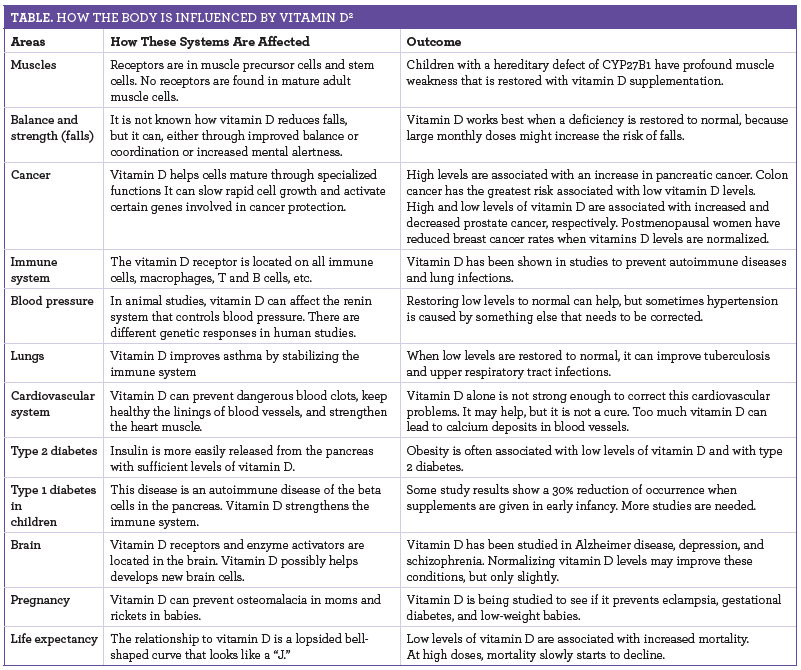Vitamin D has always been a bit of a darling in the vitamin world, but lately, the “sunshine vitamin” has gotten even more attention. A recent study examined over 4,000 people who sought out testing for COVID-19 in a Chicago health system. The study found that the people who tested positive for SARS COV-2 (the virus that causes COVID-19) were more likely to have had low vitamin D levels that went untreated in the past year. Other studies show connections between low vitamin D and COVID-19 risk, as well.
Critics of such studies explain that low vitamin D levels are common in populations who are already at greater risk for infection based on age, ethnicity, and comorbid conditions, so it may be hard to tease out whether the vitamin D alone is the issue. However, vitamin D’s role in supporting our immune system is widely accepted, and most experts agree that having adequate vitamin D levels is important for optimal health, especially at a time like this – in the midst of a global pandemic.
Here are some fast facts about vitamin D to get you better acquainted with this key hormone (yes, hormone! See #5):
- Vitamin D doesn’t come “from the sun“ as many people believe. Instead, a special type of cholesterol sitting in the surface of your skin turns into a preliminary form of vitamin D when exposed to ultraviolet B (UVB) rays from the sun. Once it’s made, it travels to the liver and the kidneys to become the activated form of vitamin D.
- It’s not just about bones. Yes, vitamin D is crucial for bone health but it also plays a role in the immune, endocrine, and cardiovascular systems. The chart below summarizes some of its many roles (source).
-
By attaching to the Vitamin D Receptor (VDR), vitamin D regulates the expression of hundreds of important genes in our bodies. This type of regulation is helpful for the prevention of cancer and autoimmunity. VDRs are present in almost every cell in our bodies.
-
Most of us are deficient. We spend lots of time indoors, we often wear sunblock when outside to minimize skin cancer risk (even just an SPF of 10 decreases vitamin D production by 90%), and our diets are low in vitamin D rich foods. If you live above the 37th parallel drawn on the map below, you are at increased risk of vitamin D deficiency for 75% of the year.
-
Vitamin D is actually a hormone. A vitamin is defined as a nutrient that we must get from food. While we do get some vitamin D from our diet, the fact that we are able to make it inside our bodies (from that cholesterol-sun interaction described above), and its chemical structure classify it as a hormone. Further, vitamin D binds to receptors and invokes biologic reactions, another quality of a hormone.
So how do we get sufficient vitamin D?
Let’s start with food. Naturally occurring food sources of vitamin D include:
-fatty fish such as salmon, mackerel, and sardines
-fish liver oil such as cod liver oil
-eggs from hens who have been fed vitamin D
-mushrooms that have been exposed to sunlight or UV light
Other foods are fortified with vitamin D (meaning that it is added during production), and may be useful for vegans, vegetarians, and folks who have food sensitivities or aversions to vitamin D-rich foods. Nut and seed-based milks like almond milk, soy milk, and oat milk are usually fortified, as are some dairy products, orange juice, and some cereals.
Despite appropriate sun exposure and dietary intake, some people still need to supplement in order to achieve optimal vitamin D levels. The best way to know if you need to supplement is to have your blood levels checked. This can be done via a simple blood test ordered by your healthcare provider.
Optimal ranges vary depending on whose guidelines you read, but there is a general consensus that a healthy vitamin D level is at least 30 ng/mL. An optimal level is likely more like 50-80 mg/mL. Achieving this is different for each person and depends on various factors such as skin pigmentation, absorption and genetics. I recommend finding a medical provider to work with who can help you to optimize your levels and find the right dose to keep your vitamin D in that sweet spot. For most healthy adults 1000 to 2000 international units of vitamin D3 is a good starting point and is unlikely to cause any harm. Some people require higher doses, and needs may change throughout the year.
Most multivitamins contain anywhere from about 400-1000iu of Vitamin D, so take this into account if adding vitamin D to your supplement regimen. Vitamin D toxicity is a real thing so taking high doses of vitamin D without monitoring it’s not recommended and can be harmful.
Article cited:
https://www.medrxiv.org/content/10.1101/2020.05.08.20095893v1.full.pdf





